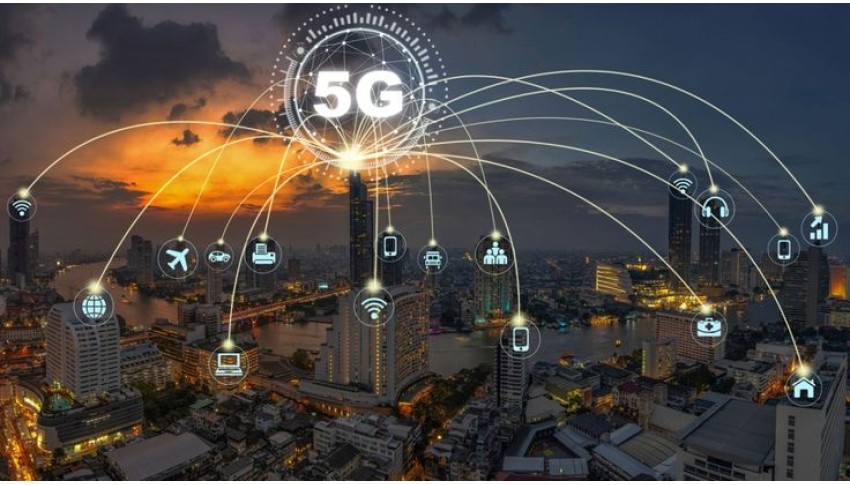A New Era in Fiber Access with BDCOM: Why is ONT / OLT Important?
Introduction: The Critical Point in Fiber Access
Today, high-bandwidth applications (4K/8K broadcasting, cloud services, IoT, smart city solutions) raise user expectations. While fiber optic infrastructures play a critical role in this, OLT (Optical Line Terminal) and ONT (Optical Network Terminal) devices form the backbone of the network.
As Öncü Güvenlik, as the distributor of BDCOM in Turkey, we would like to share with you the advantages we offer in this field and the contributions of ONT / OLT technologies to the industry.
BDCOM's ONT / OLT Technologies: Technical Infrastructure & Highlights
OLT – Central Interface of the Network
● BDCOM OLT series such as GP3600 and GP6606 offer high performance with their GPON / xPON supported structure.
● They can support thousands of ONT devices with a high port count (e.g. models with 16 PON ports).
● The system includes advanced functions such as bandwidth management, subscriber profile control, fault monitoring and security protocols.
● Modular architecture (new module addition, hot swap) is supported with Chassis systems.
ONT – Network Interface with Subscribers
● ONT devices are located at end-user locations such as homes and offices; It connects to the OLT via fiber.
● Services such as internet, IP TV, VoIP are provided to the user via the ONT.
● ONT selection is crucial based on parameters such as performance, signal strength, and optical loss tolerance.
Critical Dynamics Between OLT and ONT
● OLT-ONT pairing and auto-discovery support: the ability to recognize ONTs from different manufacturers.
● Traffic balance with DBA (Dynamic Bandwidth Allocation) mechanisms.
● Reliability features such as redundancy, fiber backup directions, and fault tolerance.
● Protection of user data with security (OMCI, authentication, data encryption).
Why Choose BDCOM ONT / OLT Should It Be Done?
1. Easy Procurement with Our Distributorship in Turkey
Öncü Güvenlik is BDCOM's distributor in Turkey. Thus, we offer the advantage of stock, technical support and spare parts.
2. Flexible Scalability
Whether small-scale projects or large operator networks; BDCOM devices are suitable for growth with their modular structure.
3. Reliability and Industrial Quality
Industrial requirements such as redundancy, high temperature tolerance, low failure rate are met in chassis systems.
4. Technical Features That Make the Difference
High port capacity, module support, supported PON technologies (GPON, XG-PON, etc.), auto-discovery capabilities.
5. Local Technical Support and Service Network
Fast solutions for malfunctions, maintenance, and software updates.
Application Scenarios
FTTH (Fiber to the Home): High-speed internet access in apartments and complexes.
FTTO (Fiber to the Office): High bandwidth for companies and office campuses.
Campus / Inter-Campus Network Solutions: Connections between buildings within the campus, network integration.
Rural / Countryside Network Development Projects: Cost-effective solution for fiber access infrastructure installation in remote locations.
Operator Level Networks: Carrier-grade OLT systems (chassis type) for critical infrastructure in large-scale projects.
Technical Tips: Installation and Optimization
Fiber Planning
– A balanced splitting ratio (e.g., 1:8, 1:16) should be selected.
– Cable infrastructure, additional connections, and cable length should be carefully measured.
Power and Backup
– OLT systems should have dual power supplies and UPS support.
Software and Management
– VLAN, QoS, and subscription profiles should be configured correctly on the OLT.
– OMCI protocols should be actively monitored, and mutual compatibility should be tested.
Performance Monitoring
– Optical signal level, RSSI, and loss values should be monitored.
– The performance of subscriber devices (throughput, latency) should be continuously monitored.
Updates
– Firmware updates and security patches should be applied regularly.
Encountered Challenges & Solution Suggestions
It's possible to encounter some problems from time to time in fiber infrastructure projects. For example, if your ONT device isn't connecting, there's usually a problem with the cables or signal strength. In this case, the problem can be easily resolved by checking the cable connections.
If subscribers experience slow speed or performance, it's usually because their bandwidth settings are incorrect. Correct settings can quickly resolve this problem, and internet quality improves.
Sometimes backup systems may not be activated. This is often due to a lack of backup power or a connection plan. This risk can be eliminated with the right backup solutions.
Incompatibility between different brands of devices is also a common occurrence. Therefore, choosing compatible devices or using systems with multi-brand support can prevent this problem.
Application Success: Sample Project Scenario
“In a housing project, we want to provide fiber connection to 80 apartments. We will provide symmetrical 1 Gbps internet to each apartment. This project can be easily managed with the BDCOM GP3600-16 model OLT, with 16 PON ports and a modular structure; the number of ONTs can be increased if necessary.”
In this example, each PON port can be connected at a 1:16 split ratio, supporting 256 ONTs; performance balance can be achieved in the system with DBA and QoS.
In fiber access projects, ONT/OLT selection isn't just a matter of device selection — it's a matter of long-term performance, security, scalability, and service guarantee. With BDCOM's strong infrastructure and Öncü Security's technical support, we guarantee quality while minimizing risks in your projects.
Are you planning a project too?
Contact us now; we are here to offer solutions tailored to your needs.
Leave a Reply
Your email address cannot be published. Required fields are marked*










Comments: 0